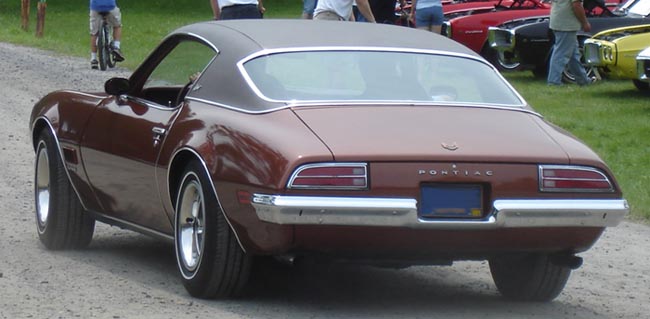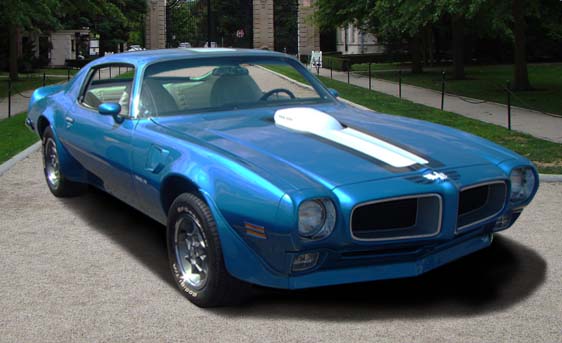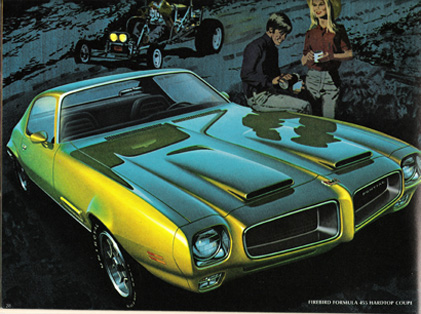The Firebird entered it's second year of production unaltered for the most part but with big news under the hood. A new GM edict declared
 1971 Firebird Esprit
1971 Firebird Esprit
that all engines must not have a compression ratio higher than 8.5:1 to allow the cars to burn low lead fuel. The horsepower war was
still on so Pontiac compensated for lower compression by increasing the 400 cid engine in the Trans Am to a whopping 455 (7.5 Liter) to
compensate for the drop in compression. This engine was decked with round port heads to complement the big cubes and was dubbed
the
455-HO (for High Output). Formula was now offered in three variants:
Formula 350,
Formula 400, and
Formula 455 with call out badges on the lower front fenders to indicate same. The Formula 350 came standard with the Esprit's 250 cid 2bbl motor but included dual exhaust. A 440 4bbl was available for the Formula 400 and two versions of the 455: a D-port version and the Trans Am's 455-HO. Esprit continued with a standard L-30 350 2bbl engine with single exhaust as standard and the 400 2bbl optional. The base Firebird continued with the Chevy built in-line 6 as standard engine and the Esprit 350 2bbl optional.
 1971 Firebird Esprit
1971 Firebird Esprit
Identifying a 1971 Firebird is very easy, except for Trans Am. All '71 Firebirds had a vent on the front fender under the belt line. Trans Am was more difficult but if you look at the shaker hood scoop and see a 455-HO decal you know you have a '71 or '72. A second look at the grille is the tip off: a fine rectangular grid is a '71 while a honeycomb grille is a '72. Like 1970 Trans Ams came in Cameo White with blue stripes or Lucerne Blue with white stripes (the paint scheme lasted until 1972). There were also some new wheel offering for 1971. The famous Honeycomb wheels made their debut along with two new hubcaps. New high back bucket seats were installed replacing the low back design with a separate headrest from 1970.
This was also the year that GM began publishing Net horsepower instead of Gross horsepower ratings in an effort to ease insurance rates that were being applied to muscle cars. Net horsepower is a measurement of engine power with all its attached accessories while gross is just the engine alone and is generally 20% higher. In 1971 horsepower ratings were published for both gross and net, but gross horsepower ratings would be seen for the last time.
 1971 Firebird Esprit
1971 Firebird Esprit